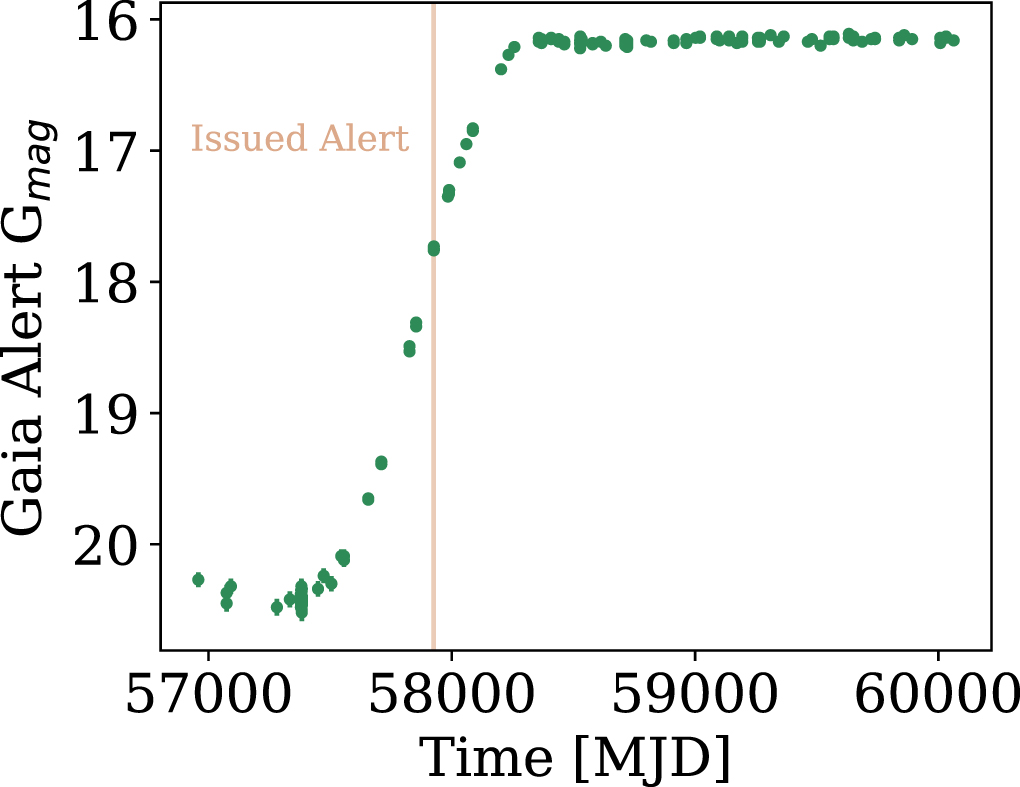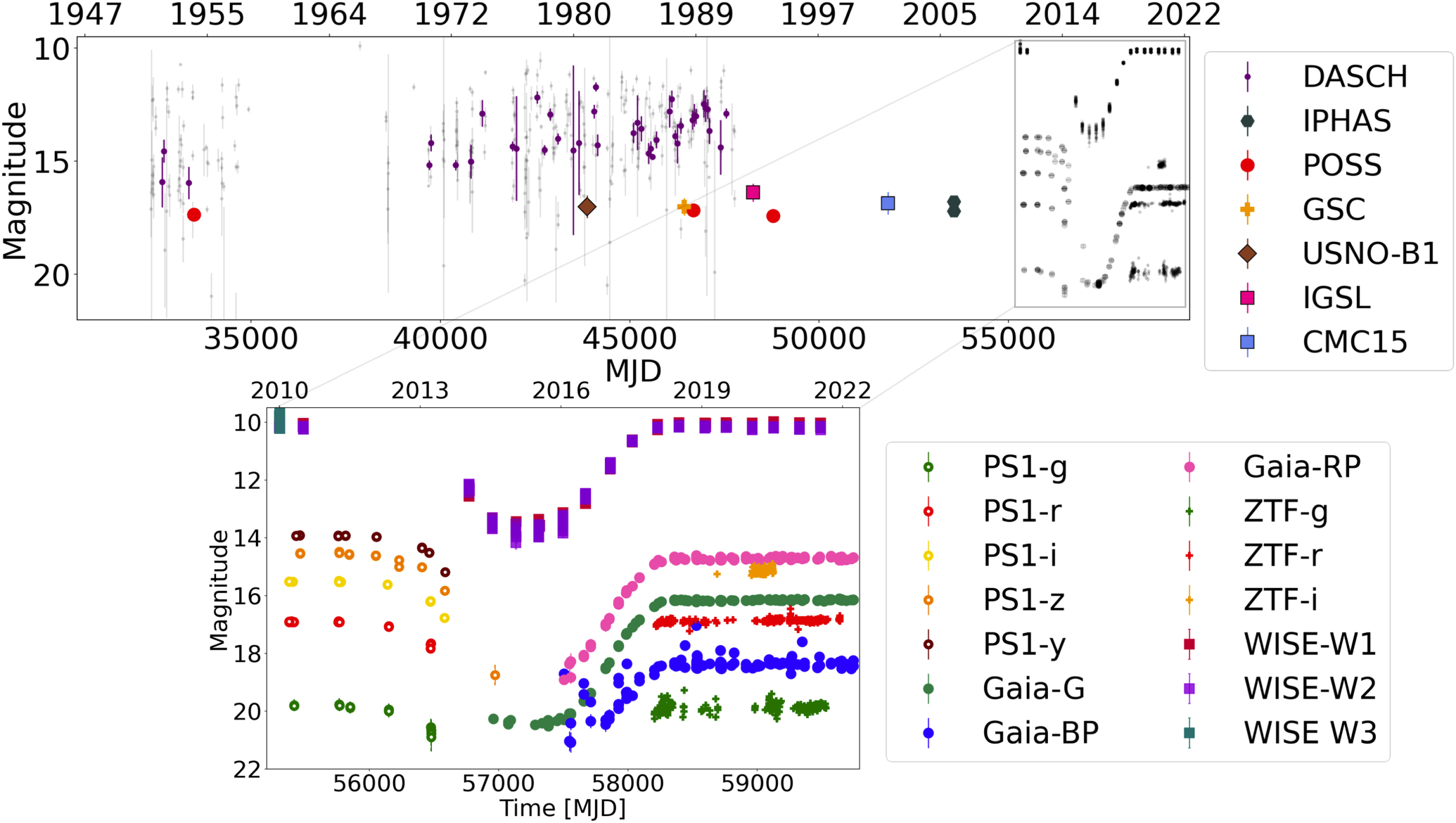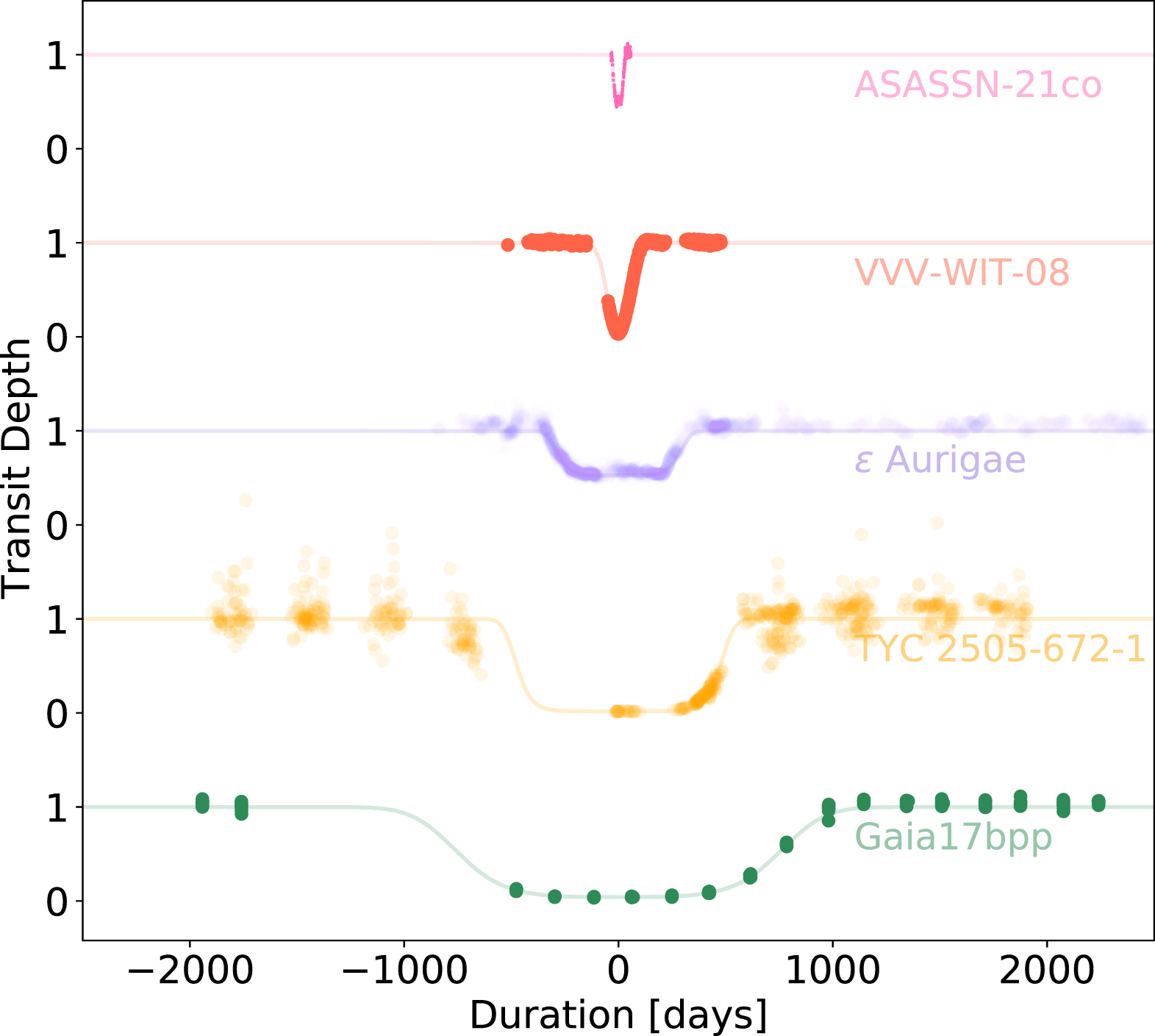Gaia17bpp Seven-Year Photobomb: Discovery of a Puzzling Giant Star
Our accepted paper now available on ApJ arXiv: 2306.12409.
The Seven-Year Photobomb: Discovery of a Puzzling Giant Star, Gaia17bpp
In a fortuitous turn of events, I was very lucky during my first year in graduate school to stumble upon Gaia17bpp/2MASS J19372316+1759029, a star exhibiting a remarkable deep single large-amplitude dimming event that persisted for an astonishing duration of over 6.5 years. This fascinating finding sheds light on a unique and rare binary star system, resembling the enigmatic Epsilon Aurigae binary, wherein a secondary star is veiled by a large optically thick debris disk.

Analysis Outcomes
Utilizing a comprehensive dataset of multi-band light curves spanning diverse surveys and wavelengths, we conducted an in-depth analysis to discern the nature of Gaia17bpp. Through the application of optical to infrared spectral energy distribution (SED) fitting, the primary star’s characteristics were constrained, revealing it to be a cool giant M0-III star with an effective temperature of 3,850 K and a radius of 58 R⊙. Interestingly, the SED fitting yielded a bimodal posterior distribution of primary stellar masses, pointing towards possibilities of the primary star having a mass of either 1.5 M⊙ or 3.7 M⊙. Further investigation showcased that, during the last 66 years of photometric coverage, no other significant dimming events of comparable depth and duration were identified in the optical light curves. Employing a Generalized Gaussian distribution, we applied a high-order Gaussian model to the optical and IR light curves, leading them to conclude that the dimming event exhibited moderate asymmetries from optical to IR. Notably, during the minimum of the dimming event, the WISE (W1-W2) color displayed an excess in blue flux by approximately 0.2 magnitudes relative to the primary star outside the dimming event, while the ingress and egress colors exhibited a shallow reddening profile. Our best guess is that the primary cause of this intriguing dimming event is likely attributed to the presence of a large, optically thick disk crossing the path of the primary giant star. To support this hypothesis, we fitted a monochromatic transit model of an oblate disk traversing a star, revealing good agreement with a slow-moving disk of approximately 0.005 km/sec, possessing a radius of roughly 1.4 AU.

Future Outlooks
As far as we can tell, the dimming mechanism behind Gaia17bpp still remains an open question. Even though an optically thick disk transit is the most reasonable one, we have yet to find both the disk and companion star of this system. It is possible that future follow-up studies will be able to examine this system carefully and learn more about its environment. I personally think the study of slow and photometrically deep dimming stellar systems gains momentum, forthcoming surveys such as the Vera C. Rubin Observatory that will conduct the Legacy Survey of Space and Time (LSST) and will be poised to play a pivotal role in unveiling more of these extraordinary eclipsing systems. With its long-time baseline and unprecedented photometric depth, LSST holds the promise of discovering many more unique stellar variables.





